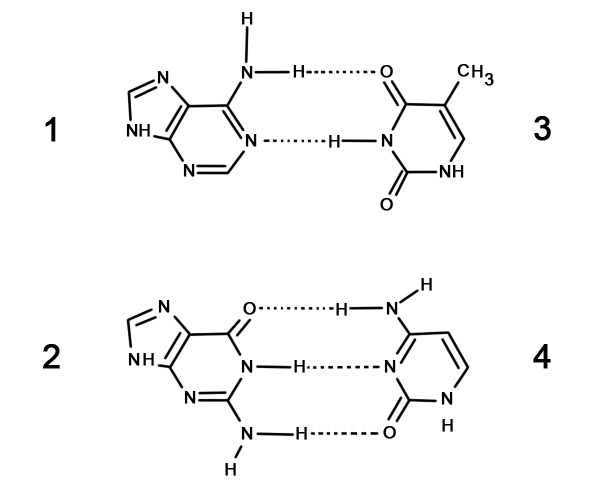DNA stands for deoxyribonucleic acid. DNA and RNA (ribonucleic acid) are nucleic acids. Alongside proteins, lipids as well as complex carbohydrates (polysaccharides), nucleic acids are among the major types of macromolecules essential for all life forms.
In this lesson, we will learn about the structure and function of DNA.
DNA is a molecule that is made up of two chains that coil around one another to form a double helix that carries genetic instructions for the development, functioning, growth, and reproduction of all organisms and many viruses. The structure of the DNA is a double helix.
Take a look below at the structure of a part of DNA helix.
.jpg)
DNA strands are made up of simpler monomeric units known as nucleotides, hence, the two DNA strands can also be referred to as polynucleotides. Each nucleotide is made up of one of four nitrogen-containing nucleobases, a sugar called deoxyribose and a phosphate group.
The four nitrogen-containing nucleobases are:
The nucleotides are connected in a chain through covalent bonds between the phosphate of one nucleotide and the sugar of the next, forming an alternating sugar-phosphate backbone. Following the base-pairing rules, the nitrogenous bases of the two polynucleotide strands are joined together with hydrogen bonds in order to make a double-stranded DNA.
The base-pairing rules state that Adenine (A) bonds with Thymine (T) and Cytosine (C) bonds with Guanine (G).
The complementary nitrogenous bases are grouped into two groups - pyrimidines and purines. In DNA, the pyrimidines are cytosine and thymine; the purines are guanine and adenine.

Both the strands of a double-stranded DNA store the same biological information. This information is replicated when the two strands separate.
A large part of DNA (approximately 98% for humans) is non-coding, this means that these sections do not serve as patterns for protein sequences. The two strands of DNA are antiparallel, they run in opposite directions to each other. The sequence of the four nucleobases along the backbone is the one responsible for encoding genetic information. RNA strands are created using DNA strands as a template in a process known as transcription. Under the genetic code, the RNA strands specify the sequence of amino acids within proteins in a process known as translation.
With eukaryotic cells, DNA is organized into long structures known as chromosomes. Before cell division, the chromosomes are duplicated in a process known as DNA replication, in order to provide a complete set of chromosomes for every daughter cell. Eukaryotic organisms store most of their DNA in the cell nucleus (nuclear DNA), mitochondria (mitochondrial DNA), or in chloroplasts (chloroplast DNA).
Prokaryotes, on the other hand, store their DNA only in the cytoplasm, in circular chromosomes.